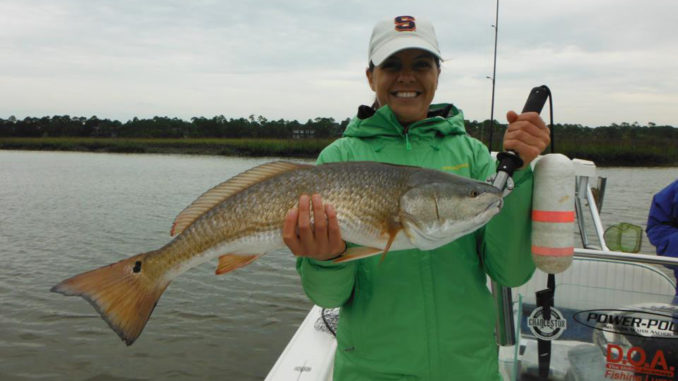
Surface temperatures approaching 60 degrees should kick off spring fishing
With water temperatures approaching the 60-dgree mark, Capt. Kevin Blair of Charleston Fish Rod Bending Company, had only one thing to say. “It’s about to bust wide open here.”
With the water temperatures in the high 50s and creeping higher, fishing has improved. Blair (843-696-4231) had his first inshore slam of the year last week with one of his fishermen catching a redfish, speckled trout and flounder on the same trip.
“We have been catching redfish all winter long,” said Blair, “and just last week, we had some very aggressive schools of reds to ourselves. It seemed that no matter how many we caught each time, when the fish came through, we would get another double hook-up.”
Blair likes to start fishing on a six-foot flood tide near the grass.
“Reds are always moving and looking for something to eat. They can warm up in the grass, and also escape the dolphins,” he said. “When casting to reds, you have to get out in front of them. Throw to a bare spot in the grass with cut bait and wait for the fish to come to you. Make it the fish’s idea to eat and trigger a strike.
“If the fish spot you, move out and start to a new spot. Sometimes you to have to move from a spot, then cast back out where you were, to get a strike.”
Blair is catching reds with mud minnows, cut mullet and quartered crabs on a short fluorocarbon leader, casting his bait, letting sit and leaving the rod in the rod holder until the fish hits.
Blair typically uses 20-pound braid on his reels when bottom-fishing for reds with a Carolina rig and 30-pound fluorocarbon leader. Sometimes, he will fish a float with a 4-foot leader if the fish are not on the bottom.
When using artificial lures for redfish, Blair uses a 7 ½-foot, medium-light spinning rod with 10-pound braid and a 20-inch, 15-pound fluorocarbon leader. He throws a Z-Man FattyZ on a 1/8-ounce flutter hook, fishing it in the grass or around oyster beds. Once the lure hits bottom, then he will twitch the bait to give it some action.
As the water starts to warm up and the tide starts going out, Blair will switch to soft-plastic paddletails, fishing them long the edge of the grass. Mullet or black/silver are the predominate colors used.
Blair said trout fishing is just beginning to heat up, with fish around creek mouths. Mud minnows fished on light jigheads or shrimp fished under corks have been productive on an outgoing tide.
Sometimes “beating on the cork” will help take more trout. Blair does this by fishing a D.O.A. shrimp with a 5-foot leader in four to eight feet of water with a float. By “beating on the cork,” working the rod up and down, it makes the shrimp jump up and down and gets the trout’s attention.




Be the first to comment